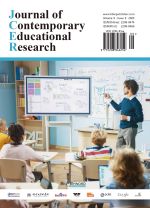Research on the Cultivation of Top-notch Innovative Talents in Universities from the Perspective of the Integration of Education, Science and Technology, and Talent
Abstract
To better clarify the impact of the integration of education, science and technology, and talent on the cultivation of top-notch innovative talents in universities, this study adopts the fuzzy-set Qualitative Comparative Analysis (fsQCA) method. Using 23 universities in China as the research sample, the findings reveal that: (1) none of the three individual factors, education, science and technology, or talent can independently constitute either a necessary or sufficient condition for high-quality cultivation of top-notch innovative talents; (2) the sufficient condition for achieving high-quality cultivation lies in specific configurations of multiple condition variables; (3) five configurations were identified, from which three distinct paths toward achieving high-quality cultivation were derived. Accordingly, different universities can, based on their own resource endowments and local contexts, select appropriate cultivation paths to effectively enhance the quality of top-notch innovative talent training.
References
Huang L, 2023, Why the Selection and Training of Top Innovative Talents in Universities is “Different Within Similarities”: An Analysis Based on 39 Pilot Universities of the “Strengthening Basic Disciplines Plan”. Chongqing Higher Education Research, 11(5): 13–24.
Tan Z, Wang J, Mu S, 2024, Practical Dilemmas and Path Optimization of Top Innovative Talent Training: A Case Study of the “Strengthening Basic Disciplines Plan”. Higher Architectural Education, 33(1): 17–26.
An G, Zhao X, 2022, Research on the Training of Top Innovative Talents Under the Background of “Double First-Class” Construction. Journal of Henan University (Social Science Edition), 62(1): 10.
Pattyn V, Molenveld A, Befani B, 2019, Qualitative Comparative Analysis as an Evaluation Tool: Lessons from an Application in Development Cooperation. American Journal of Evaluation, 40(1): 55–74.
Rihoux B, 2006, Qualitative Comparative Analysis (QCA) and Related Systematic Comparative Methods: Recent Advances and Remaining Challenges for Social Science Research. International Sociology, 21(5): 679–706.
Du Y, Jia L, 2017, Configurational Perspective and Qualitative Comparative Analysis (QCA): A New Approach for Management Research. Management World, 2017(6): 155–167.
Lu Y, Xiang P, 2023, Multiple Configurational Paths of China’s Organic Agriculture Development: Based on Fuzzy-Set Qualitative Comparative Analysis. Chinese Journal of Eco-Agriculture (Chinese & English), 31(4): 654–664.
Zhang L, Dai G, Xiong Y, et al., 2022, Evaluation and Influencing Factors of Digital Transformation in China’s Manufacturing Industry: Based on Fuzzy-Set Qualitative Comparative Analysis. Science and Technology Management Research, 42(7): 11.
Ragin C, Fiss P, 2008, Net Effects Analysis Versus Configurational Analysis: An Empirical Demonstration. Redesigning Social Inquiry: Fuzzy Sets and Beyond, 240(2008): 190–212 190–212.

